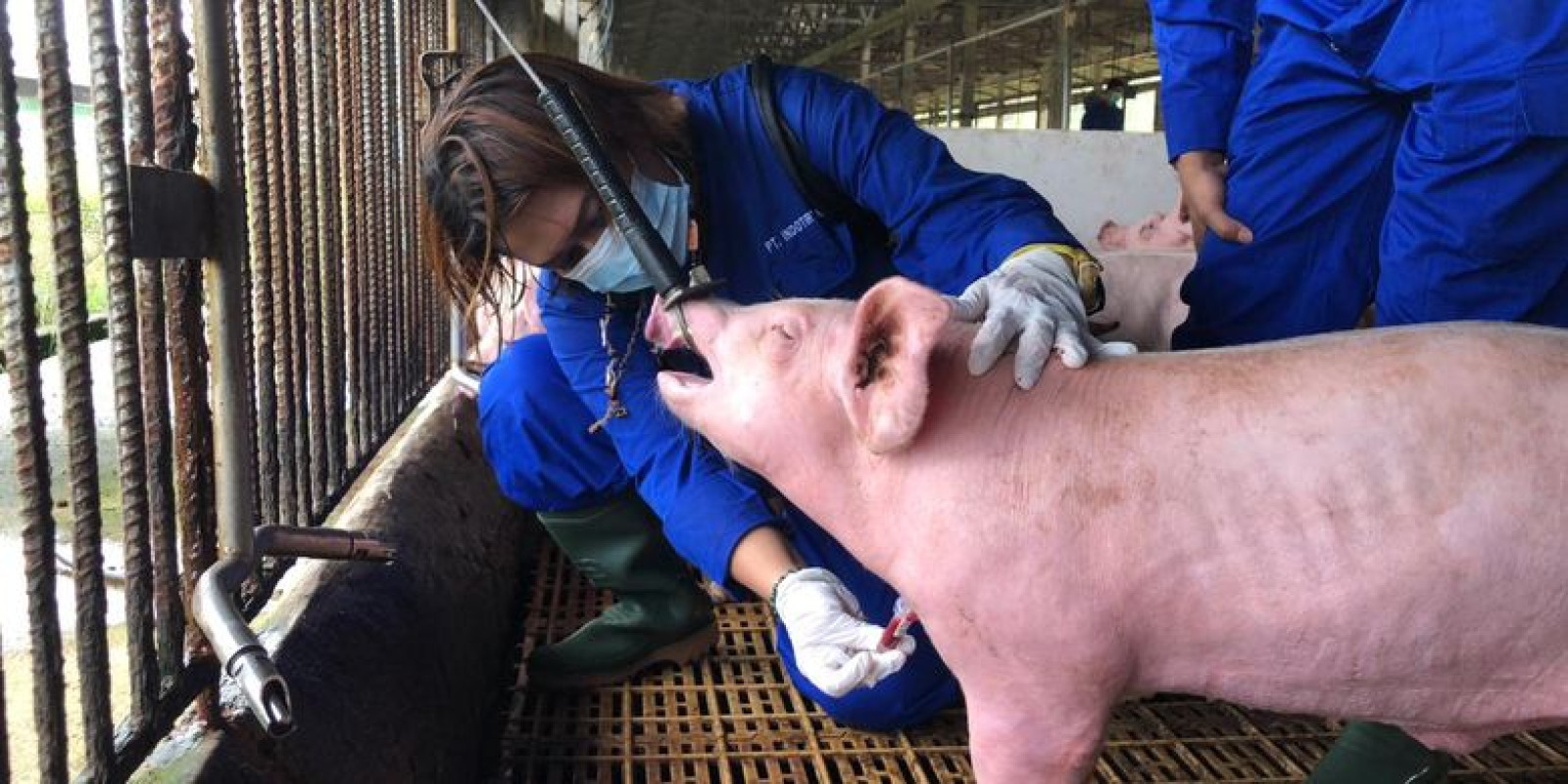
Contact rate and risk factors of classical swine fever disease
Abstract Background and Aim: Classical swine fever (CSF) is one of the primary diseases in animals in Indonesia, particularly areas that supply pig meat to the country, such as Karanganyar district, Central Java. The government has tried to prevent and control the disease by vaccination, but it has not yet given effective results. Therefore, another attempt to prevent the recurrence of CSF cases is to apply biosecurity in pig farms by looking for risk factors associated with on-farm and off-farm contact. This study aims to determine the contact rate and investigate the risk factors associated with on-farm and off-farm contact in commercial and smallholder pig farms in Karanganyar, Central Java, Indonesia, in the context of controlling CSF disease. Materials and Methods: This study used a cross-sectional study design in which the pig farm was designed as the observed epidemiological unit. The contact structure data were conducted by sampling using a two-stage random method. We selected Karanganyar district because it is the center of a pig farm in the Central Java Province and has many CSF cases in several years before. The study was conducted for more or less 1 month from August to September 2019. The contact data were collected from 37 smallholder farms and 27 commercial farms within interviews. Risk factors for contact with pigs were analyzed using logistic regression using the Statistix Program version 8.0 (www.statistix.com). Results: In comparison to smallholder farms, commercial farms had 2.38 and 3.32 times higher contact rate in outside farms and inside farms, respectively. Two factors increased the risk for on-farm contacts including commercials type farm (p=0.0012; odds ratio [OR]=8.32) with contact rate of 1.24 times/day and the time interval of CSF vaccination for 1-3 months (p=0.0013; OR=8.43) with contact rate of 0.98 times/day, and three factors increased the risk for off-farm contacts including the commercial farm type (p=0.012; OR=4.88) with 1.50 contact/day, the time interval of CSF vaccination for 1-3 months (p=0.036; OR=3.83) with 1.30 contact/day, and farmers with experience in pig husbandry <5 years (p=0.075; OR=3.56) with 1.13 contact/day. Conclusion: This study shows that commercial farms and short CSF vaccination intervals increased the risk of either off-farm or on-farm contacts. The contact structure of pig farms in Karanganyar district is similar to that in other areas in Indonesia. Reducing the risk of contacts either outside or inside the pig farms is essential to prevent disease transmission. Enhancing communication and education to pig farmers and surveillance is also necessary to prevent such diseases in pigs. Keywords: classical swine fever, contact rate, odds ratio, off-farms, on-farms, risk factors.

